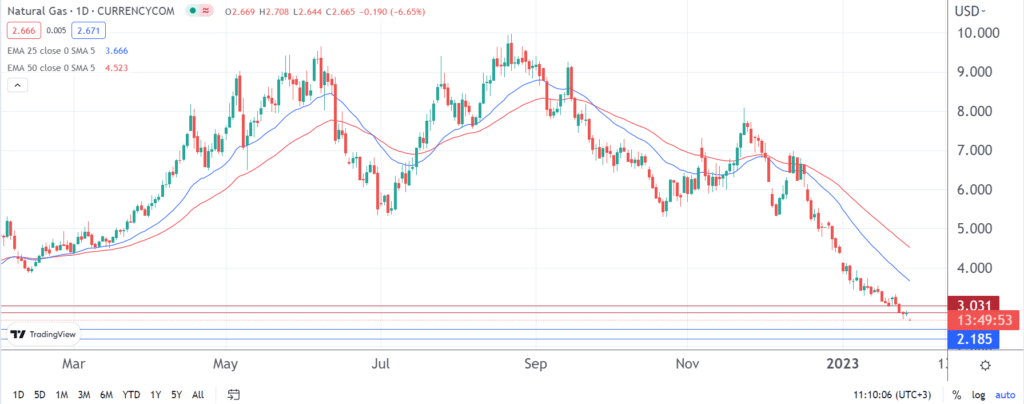Natural gas prices in the US dropped even further on Monday as a decline in demand continues to weigh on the commodity. For close to a week now, the futures for February delivery in the New York Mercantile Exchange have been trading below the once steady support zone of $3.00 per million British thermal units. As at the time of writing, it was at $2.66; down by 6.69%.

What’s driving the natural gas market?
Supply/demand dynamics
Over a span of about two months, US natural gas prices have plunged by close to 70%. In fact, the additional losses recorded on Monday have the commodity trading at a level last hit in April 2021.
Notably, weather remains the key driver of the commodity. In August 2022, concerns that the supplies wouldn’t be enough to meet the heating demand during the North Hemisphere’s winter season fuelled a rally to a 14-year high at $10.03.
Interestingly, both Europe and the US successfully ramped up inventories ahead of the cold period. The surge in supply, coupled with the mild winter season, is the reason behind the plunge in natural gas prices. In fact, as highlighted in last week’s EIA’s weekly natural gas storage report, stocks are 107 billion cubic feet (Bcf) higher than during a similar period in the past year. Besides, they are 128 Bcf higher than the 5-year average.
Freeport facility reopening
Besides, the longer-than-expected closure of the Freeport LNG plant in Texas has also contributed to the significant decline in natural gas prices in the US. The facility shut down following the explosion reported in June 2022. This impacted US LNG imports while increasing domestic supplies.
On the one hand, the Federal Energy Regulatory Commission (FERC) approved Freeport’s request to take the initial steps needed to resume activities in the facility. This involves cooling down some of the piping as well as reinstating its gas management system. Even so, it has to submit further requests to restart services within three of its liquefaction trains.
It may take a while to satisfy the demands of the federal regulator. As such, this will likely remain a major driver that maintains the bears’ control over the natural gas market.





